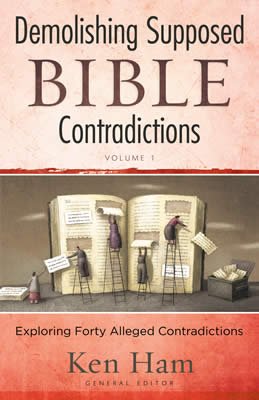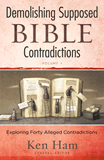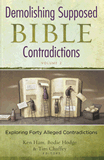
Does Genesis Contradict Itself About the Order of Nations
What do Genesis 10 and 11 say about the origin of nations and people groups?
The charge has been made that there is a contradiction in Genesis 10–11. The accusation is that if people had already spread around the world (as recorded in Genesis 10), fulfilling God’s command, why was mankind judged with the confusion of languages as recorded in Genesis 11? This is actually an easy “contradiction” to clear up.
Genesis 10, often called “the Table of Nations,” traces the origins of nations and people groups as they dispersed around the world after the flood. It is a historical narrative of the descendants of Noah’s three sons. This chapter concludes with this statement:
These were the families of the sons of Noah, according to their generations, in their nations; and from these the nations were divided on the earth after the flood” (Genesis 10:32 NKJV).
After the descendants of each of the sons of Noah are mentioned, the text says that they were dispersed “according to their families, according to their languages” (Genesis 10:5, 20, 31 NKJV). So, if Noah and his sons all spoke the same language, where did all of these other languages come from? Genesis 11 gives us the answer.
These groups of people did not willingly and obediently separate to fill the earth. Rather, we learn in Genesis 11:1–9 why these families separated from each other and how it came to be that there were so many languages in the world.
There is no contradiction here; Moses merely put the effect before the cause. Genesis 10 gives an overview, and then Genesis 11 fills in the details. You often find the same technique in other history books. One chapter might contain an overview of World War I—along with a list of major events. But the very next chapter might detail what the world was like in the years before the war and what events led up to it.
There may also be another reason why the order of these two events is switched. Keith Krell explains:
The actual outworking of the genealogies of Genesis 10 occurs after the events at the Tower of Babel (cf. 11:1 with 10:5, 20, 31). This interspersal of narrative (11:1–9) separates the two genealogies of Shem (10:21–31; 11:10–26), paving the way for the particular linkage between the Terah (Abraham) clan and the Shemite lineage (11:27). The story of the tower also looks ahead by anticipating the role that Abram (12:1–3) will play in restoring the blessing to the dispersed nations. By placing the Tower of Babel incident just prior to the stories of Abram and his descendants, the biblical writer is suggesting, in the first place, that post-flood humanity is as wicked as pre-flood humanity. Rather than sending something as devastating as a flood to annihilate mankind, however, God now places His hope in a covenant with Abraham as a powerful solution to humanity’s sinfulness. This problem (Genesis 11) and solution (Genesis 12) are brought into immediate juxtaposition, and the forcefulness of this structural move would have been lost had Genesis 10 intervened between the two.
Demolishing Supposed Bible Contradictions: Volume 1
Recommended Resources

Answers in Genesis is an apologetics ministry, dedicated to helping Christians defend their faith and proclaim the good news of Jesus Christ.
- Customer Service 800.778.3390
- © 2025 Answers in Genesis



